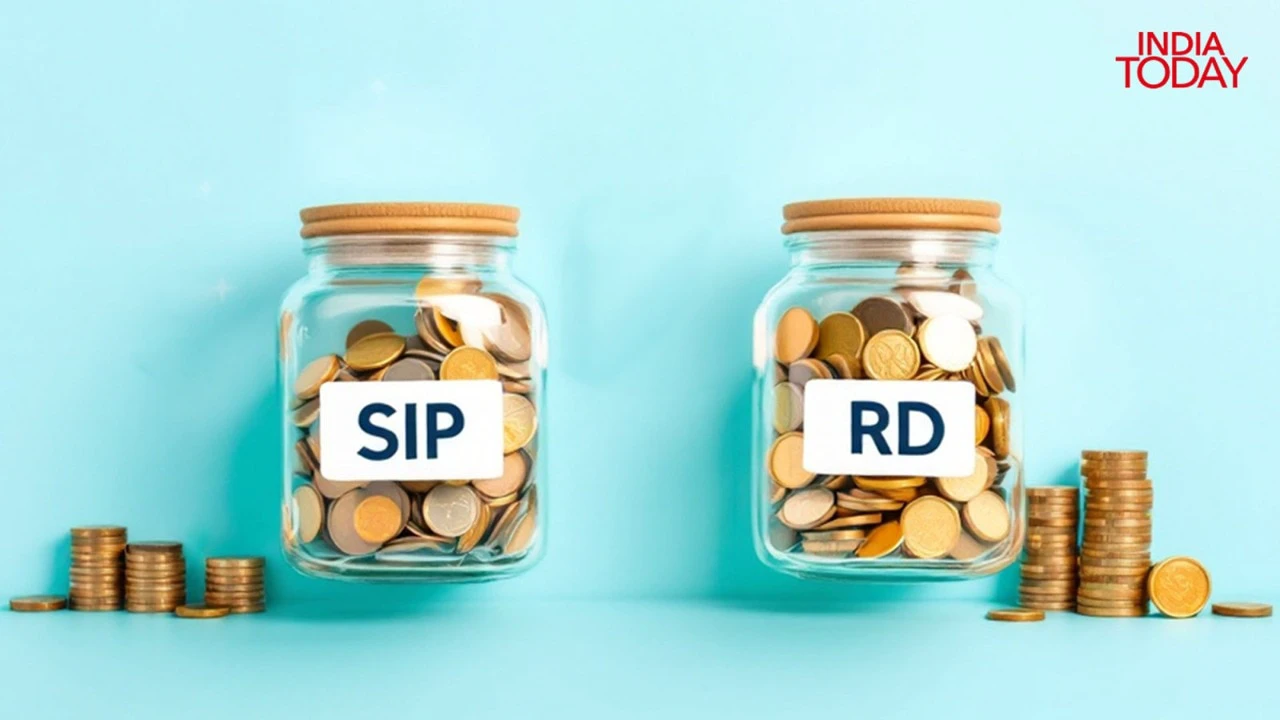For most Indian households, setting aside a fixed amount every month is a discipline passed down through generations. Earlier, Recurring Deposits (RDs) were the default choice – safe, predictable, and easy to understand.
But with mutual fund SIPs now becoming mainstream, the question has shifted from “Should I save monthly?” to “Where should I invest monthly – SIP or RD?”
IndiaToday.in spoke to Ranjit Jha, MD and CEO of Rurash Financials, and Shubham Gupta, CFA and Co-founder of Growthvine Capital, to decode this classic dilemma.
IT ALL BEGINS WITH YOUR GOAL
“If the goal is short-term, anything under three years, RDs clearly win with their safety and predictability,” says Ranjit Jha. “But when you’re thinking long term – five years, ten years or more, SIPs are demonstrably more beneficial due to their exposure to equity and the power of compounding.”
Shubham Gupta puts it simply: “RDs are nothing but SIPs in fixed deposits. They give guaranteed returns but rarely beat inflation. SIPs, on the other hand,
THE GAME OF RETURNS: STABLE VS POWERFUL
An average RD today offers 4-7% returns. Decent, but just enough to keep pace with inflation. But SIPs have played on a different pitch altogether.
“Over a 5-10 year period, SIPs in well-managed equity mutual funds have historically delivered 10-15% CAGR,” says Jha. “The gap is wide because RD is fixed-income, while SIPs participate in the growth of businesses through equity.”
Gupta agrees, adding, “In the last decade, SIPs have delivered 15-20%, but even sustainably, 10-12% is achievable. RDs grow your savings safely; SIPs grow your wealth meaningfully.”
TAXATION: THE INVISIBLE DIFFERENCE
Returns are one thing, but what remains after tax is what truly counts.
“RD interest is fully taxable every year as per your income slab,” explains Gupta. “You pay tax even on accrued income, even if your RD has not matured.”
“In contrast, SIPs are taxed only at redemption. If you stay invested for more than a year, LTCG rate is 12.5% with an exemption of INR 1.25L in capital gains each financial year making the tax rate lower than RDs for most investors,” he says.
Jha points out another edge, “Additionally, SIPs in ELSS funds offer a tax deduction under Section 80C, giving them a clear tax advantage for long-term investors.”
SAFETY OR GROWTH – WHAT’S YOUR PERSONALITY TYPE?
“Risk appetite is the most crucial factor in this decision,” says Jha. “If you are someone who panics at market volatility, stick to RDs. They guarantee capital protection. But .
Gupta explains this beautifully: “During turbulent markets, RDs make you feel secure. But if you stay invested through the ups and downs, SIPs reward patience. One gives peace; the other gives prosperity.”
LIFE GOALS DECIDE THE WINNER
For short-term goals such as buying a car, planning a wedding, or building an emergency fund, RDs work well because they are safe and predictable, says Gupta.
“But for long-term goals like retirement planning, children’s education, or building wealth, SIPs in equity mutual funds tend to outperform,” he explains.
“SIPs are ideal when your investment horizon is five to seven years or more,” says Jha. “That’s where compounding shows its real magic.”
THE SMARTEST STRATEGY? DON’T CHOOSE – COMBINE
Interestingly, both experts recommend not choosing one over the other.
“I advise a ‘Core and Satellite’ strategy,” says Jha. “Let RDs be your Core, your safety net for emergencies and short-term goals. Let SIPs be the Satellite, where long-term wealth quietly builds.”
Gupta echoes this thought: “RDs give stability. SIPs create prosperity. A disciplined mix keeps you grounded without stopping you from growing.”
Simply put, if you want security, choose RDs.
If you want growth, choose SIPs.
If you want both – blend them wisely.
Because wealth isn’t built overnight. It’s built one disciplined month at a time, whether it’s a deposit or a fund.
